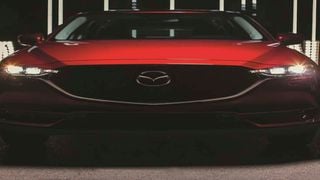
Mazda CX-5.
| Pool | Nation Media GroupDN2
Premium
Does Mazda CX5 make the cut as an upgrade of Axela?
What you need to know:
- The CX-5 is roomier and more tractable than the Axela, which is a good thing; however, you mention “two more adults and three other children”.
- The ground clearance on a CX-5 won’t bring an ostrich to mind, but I will stake the rising cost of fuel on it being leggier than the Axela.
Baraza,
I own a Mazda Axela. It has been a joy to drive for the last three years. Besides a side mirror that was knocked off by a driver who sped off and a rear light that broke when someone who’s not me backed into a gate, all the car has needed is servicing.
As much as the car has served me well, I’m considering upgrading to the Mazda CX5, but I don’t want to buy it just because it looks good. I’m looking for a roomier car – I have three children, and once in a while I carry more people, say two more adults and three other children.
When I bought the Axela, I had to have it “lifted”, for lack of a better word, because it would scrap all the bumps I came across, no matter how small. What’s the ground clearance like for the CX5? Will I have to lift it too? What about fuel consumption?
With the Axela, Sh1,000 is enough to get me from Kiambu County to Nairobi County and back. How much more will I have to cough for the CX5 if I have to make such a trip? So, in a nutshell, what’s the current asking price for the CX5? Is it roomy? (I have never been in one) What’s its ground clearance like? How economical is it in terms of fuel?
Someone told me that there’s a diesel version and a petrol version and that the diesel version is better – how true is this?
Looking forward to a detailed review,
Njeri
Hi Njeri,
Congratulations on the exemplary maintenance of your Axela. Your experience is broadly similar to my own with a Demio; only mine had fewer dings and scrapes, irrespective of fault and responsibility.
The CX-5 is roomier and more tractable than the Axela, which is a good thing; however, you mention “two more adults and three other children”. If you include yourself, that makes six people. The CX-5 is a 5-seater.
Do you see the problem here, or are you one of those hard-headed cant-tell-me-nothing Kenyans who ferry Napier grass at the back of a Land Rover Discovery 4 because the car cost a lot of money, and it has to justify its existence?
Hold that thought; we’ll get back to that shortly.
The ground clearance on a CX-5 won’t bring an ostrich to mind, but I will stake the rising cost of fuel on it being leggier than the Axela; after you lifted the Axela. Depending on where and how you drive, you won’t need to raise the CX5. If you go through terrain that defeats the clearance of a CX-5, then perhaps a CX-5 is not what you want.
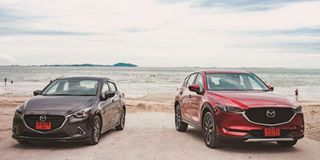
Mazda CX-5.
Fuel consumption: this has no answer. Driving from Kiambu County to Nairobi County means accosting gridlock and/or roadworks. These will make a massive difference to the fuel consumption of any vehicle that is not purely electric.
Smooth, empty will give you fuel economy figures bordering on the glorious, whereas navigating civil engineering projects while tailgating slower traffic means you are always in first or second gear. Fuel consumption will shoot up dramatically.
While on the subject of fuel... where do y’all get off measuring fuel in Kenya shillings? You know Sh 1000 worth of fuel last month is not the same as Sh 1000 worth of fuel now. And your fuel gauge does not reflect the fuel you have in shillings, it does so in litres. Balances in Keya shillings are only found in ATM receipts and M-Pesa messages.
At Sh100 per litre, a thousand shillings is ten litres. At Sh 120 per litre, a thousand shillings is just about 8 litres and a bit. That’s a difference of, say, one and a half litres of fuel. If your car averages 12km/l, one and a half litres are suitable for a clean 18 kilometres, or the distance from Kikuyu to Lang’ata along the Southern Bypass.
That is not an insignificant difference on any scale, even if we are talking about a journey of a thousand miles.
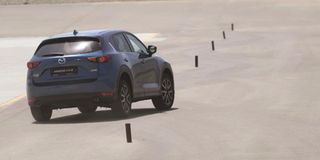
Mazda CX-5 SUV.
If you limit yourself to the 2.0-litre petrol CX-5, it shouldn’t burn fuel much different from a 2.0 litre Axela. It may be even better, seeing how your Axela most likely came with a previous-generation MZR engine while the CX-5 is available with the latest SkyActiv iteration which is alleged to be a paragon of excellence in terms of efficiency.
Avoid the diesel CX-5 because diesel is the devil’s bathwater as far as small cars are concerned, and the 2.5 litre block implies you are straying into upper middle class territory.
So, in a nutshell, it seems your mind is made up on the CX-5, which is why you want to know the price, no? Well, they’re not cheap. Blame the model’s rising popularity: the cheapest I found on a website I use for benchmarking purposes (but won’t explicitly mention unless they pay me an endorsement fee; the economy is bad right now) was a 2012 model at 1.7 million fistfuls of cabbage. Most 2013-2014 cars are in the 2.2 - 2.5 million range. You can buy a Range Rover Sport for this kind of outlay, but don’t.
Is it roomy? Depends on where you are coming from, which, in your case is an Axela, so for you, yes it is. The ground clearance stands at 8.3 inches or 211mm, depending on what you are using for comparison, cucumbers or tape measures. 21 centimetres is not exactly Prado-class but combined with the highly nonexistent overhangs and relatively short wheelbase of the CX-5, this means most roadworks can be traversed trouble-free.
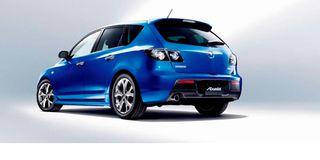
Mazda Axela
Fuel economy is not painful if you are cautious with the hot pedal, but you are spending used Range Rover money on a used Mazda, you don’t seem like the type to count coins. Lastly, the diesel version is NOT better, trust me. I broke it down in great detail why right here some months ago.
Now, back to the thought I asked you to hold. You want to ferry six people. How often does this happen? Here we have a situation where you have to weigh your preference for a particular car against the frequency of specific needs outside of that car’s abilities. If you carry the six more often than not, then forget about the CX-5, it was never meant to be.
Combined with a requirement for ground clearance, you may as well just get a Prado - seven seats and running gear sufficient enough to drive over a low wall. However, if you ferry the six less frequently than often, then you can indulge your Mazda cravings and spend half of 5 million shillings on one, but this comes with an inconvenience.
When the time comes to ferry the six, you have two options: lease a seven-seater for that particular occasion or load up the three tykes into the CX-5 and ask the two adults to take a cab. I will NOT endorse overloading, no matter how much you think you are saving.
A car-pooling quagmire. Help!
Baraza,
I am in a car-pooling group with several parents. We have eight children among us. Each of us takes turns dropping our children to school at least one day a week, dropping and picking.
I drive a Toyota Premio, and to be honest, the car feels overloaded when I carry all those children, who are getting bigger by the day. I am thinking of selling the Premio and buying a Voxy or Noah for the sole purpose of ferrying the children to school one day a week.
The rest of the time, I will be driving to and from work at most twice a week and going to the supermarket and market once a week.
Would this be a worthwhile investment? How much does one of these vans, or another that you would recommend, cost? What about fuel consumption? How affordable is it?
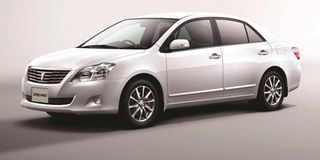
Toyota Premio
Hello,
This week we are all about overloading vehicles, huh? More so with children. Y’all play too much.
Your car feels overloaded because it is. It is designed to carry five people, five individuals, age notwithstanding, but you are shoehorning double that number into the insufficient pew space in the name of a school run. A Voxy-Noah is more appropriate for this work but you’ll still be short by about two seats.
You too have a dilemma like Njeri up above in that you have and/or want a car with specific needs outside of their capability with a replacement that can only be justified by frequency of use; the difference is, in Njeri’s case, the disparity was narrow; while in your case, the expanse between “have” and “need/ want” is vast.
For school runs, you need a nine-seat capacity, but the rest of the time you’ll be alone in a bus with eight empty seats. I say 9-seater not because the Voxy-Noah can seat that many, but because you need at least nine seats to accommodate you and eight rapidly developing saplings. So, what to do?

Noah Voxy
Buy the van, but not the Voxy or Noah. It won’t fit the eight, more so once they enter their teenage years where puberty causes growth spurts and a lot of awkwardness between the genders so induced claustrophobia will not make you a champion in their eyes.
Pony up for something bigger like a Regius or even a Hiace. They seat more than nine with a lot of space to spare and get this: if properly kitted, the vehicle won’t even need to lie fallow during the school holidays; it can moonlight as a TSV. This side hustling may even help recover some of the outlay channelled towards its acquisition.
Would a van be a worthwhile investment? I’m a father, and any investment made for the betterment of my heirs’ welfare is worthwhile. If I was on the school run like you I’d be a high-capacity vehicle aficionado making such inscrutable puns as “Non-van RAM man buys RAM van and becomes RAM van man”.
A Voxy or Noah costs around a million and a half, give or take three hundred grand here or there. The Regius went out of production with the H100 Hiace of which it was a derivative, so getting one means living with the pitfalls of owning a vehicle that is around 20 years old. Its replacement is the Alphard which, a) doesn’t seat nine and b) costs as much as a three-bedroom house in a middle class neighbourhood.
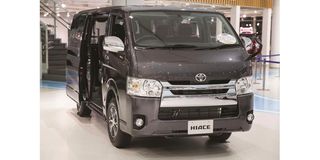
That leaves the Hiace. You could buy a diesel one, which will cost a lot of money; money recoverable from saved fuel costs (over very many years) or through the other advantages offered by diesel engines when put to commercial use, such as the TSV application I mentioned; but you don’t really need that kind of mental gymnastics.
The H200 Hiace can be bought with a 2.0 litre petrol engine which is about as much as you need to tote eight germinating Mini-Me’s from home to school and back, and can still just barely hack TSV work, which is not its primary objective anyway.
The icing on the cake is a 2.0 litrepetrol H200 costs exactly the same as a Vohonoaxy of the same vintage, but you will pay extra for the roof and seat configuration; or you could buy a ready-to-go TSV diesel model from 2007. I found one at a million flat from that same website I mentioned earlier.
Buy a Hiace.
Send your motoring questions to [email protected]





